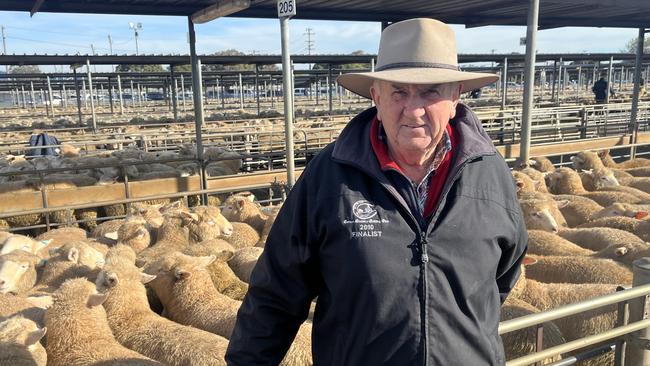Mutton market pressure as numbers flood saleyards
Mutton prices are diving and light sheep are making as little as $2 as a surge of stock flattens value.
A wave of sheep coming into saleyards has forced prices as low as $2 this week as mutton values plummet.
The national mutton indicator closed on Monday at 232c/kg carcass weight, but the Victorian indicator dived to 206c/kg carcass weight, dropping 18c/kg carcass weight in the past week and 87c/kg in the past month.
And in a stark result, the Victorian indicator is tracking 316c/kg lower than a year ago.
At Bendigo on Monday, most sheep made less than 200c/kg carcass weight, which meant medium to light sheep sold from $10-$50 for a yarding of nearly 5000 sheep.
But it was even tougher at Dubbo, NSW, where sheep sold as cheaply as $2 for ewes and $4 for wethers.
National Livestock Reporting Service reporter David Monk said heavy-weight sheep were $15-$20 cheaper at the major NSW selling centre, with better sheep selling from 205-260c/kg carcass weight.
But at the other end of the scale, Mr Monk said lighter sheep were $6-$9 cheaper, with Merino ewes selling down to $2 and Merino wethers to $4.
Elders Bendigo livestock manager Nigel Starick said the season would dictate whether mutton prices fell further or not.
“You would like to think we have seen the bottom and most abattoirs are saying that, but the truth is, no one knows,” Mr Starick said.
“If we get spring rains, it should be OK as there will be a more orderly flow of mutton sheep onto the market but if the season is tighter, then they could all come on at once.”
Mr Starick said lighter sheep made $10-$20 at Bendigo on Monday, and shorn sheep had an extra hit built in due to skin disposal fees.
“Producers were still glad to see these kinds of sheep sold though as they wanted to move them on and get them off their places,” he said.

Meat and Livestock Australia market information manager Stephen Bignell said mutton production was seeing a lift as seasonal conditions tightened in some areas.
“Sheep slaughter for the quarter (April to June) was 2,550,700, which is the highest in nearly four years,” Mr Bignell said.
“It means nearly five million sheep have been processed so far this year.
“This is an extra 2,024,800 compared to the same point in 2022, equating to an additional mutton throughput of 68 per cent year-on-year.”
Mr Bignell said Victoria was the biggest contributor to the lift in mutton slaughter.




